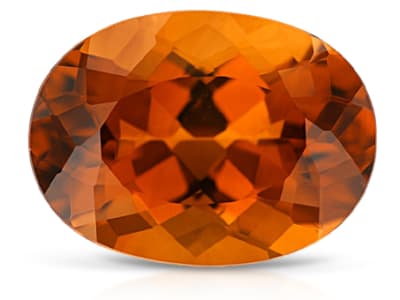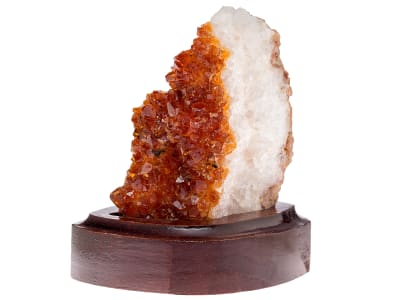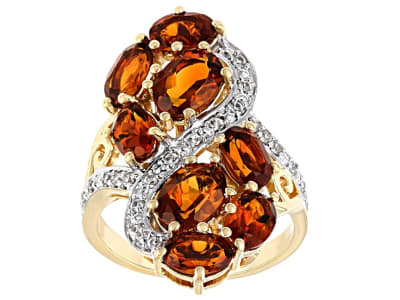The Madeira name comes from the Brazilian word meaning ‘wood’ or ‘wood colored’. Most madeira citrine comes from heating amethyst with a brownish core to get the warm yellow or orange color. The primary sources come from the Brazilian state of Rio Grande do Sul, Uruguay, Zambia, and Madagascar.
General Information
Common Name
Madeira Citrine
Species
Quartz
Transparency
Translucent-Transparent
Dispersion
Strength: Weak Fire Value: 0.013
Refractive Index
1.544-1.553 Tolerance: very constant
Birefringence
0.009
Optic Character
Uniaxial
Optic Sign
Positive
Polariscope Reaction
Doubly Refractive (DR)
Fluorescence
SWUV: Inert
LWUV: Inert
LWUV: Inert
CCF Reaction
None
Pleochroism
Dichroic, weak to moderate shades of yellow
Hardness
7
Toughness
Good
Inclusions
Citrine is a type I clarity. Color zoning in citrine is often present in the form of "tiger stripes" or "zebra stripes". Stones may contain crystals, negative crystals, liquid inclusions, two-phase inclusions and partially-healed fractures.
Luster
Vitreous
Stability
Good
Fracture
Conchoidal
Cleavage
None
Chemical Name
silicon dioxide (aka silica)
Chemical Formula
SiO2
Crystal System
Trigonal
Madeira Citrine Colors
-
 Orange
Orange -
 Orange
Orange -
 Yellow
Yellow
Countries of Origin
Unknown; Uruguay; Brazil; Madagascar; Zambia
History
Madeira citrine was often confused with topaz before modern gemological testing.
Care
Avoid jewelers torch.


